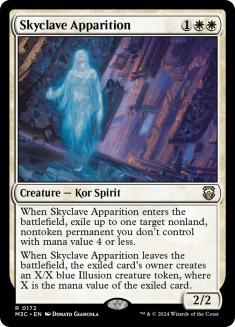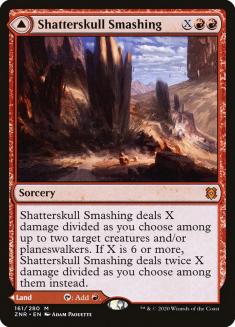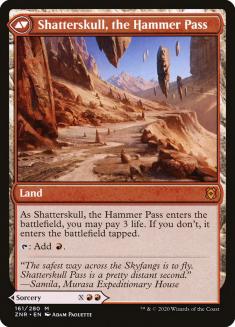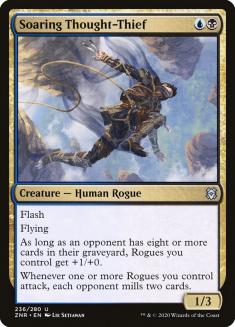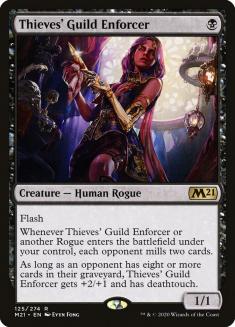What a ride Zendikar Rising gave us, eh? Old favorites made their return, new favorites made their debut, and Omnath got kicked to the curb for being far too powerful.
We’ve never seen a set like Zendikar Rising before and who knows if we’ll see one like it again — which is all the more reason to bring together the same five members of the SCG Staff from our Zendikar Rising First Impressions article to answer a few exit interview questions before Kaldheim drops… tomorrow!
1. What’s your Tweet-length review of Zendikar Rising?
Paulo Vitor Damo da Rosa: Zendikar Rising is a cool set that was unfortunately unable to match up to the powerhouse that was Throne of Eldraine.
Ryan Overturf: I’ll look fondly back on Zendikar Rising for the party mechanic and modal DFCs, both of which are incredible designs. I’ll be able to focus on these positives because I never felt compelled to play competitive Magic in formats where Omanth, Locus of Creation was legal.
Ross Merriam: It’s a solid, yet unremarkable set marred by the mistake of Omnath, Locus of Creation and the fact that it lives in the shadow of Throne of Eldraine. Its final test will come in the fall once it emerges from that shadow.
Shaheen Soorani: Outside of the modal DFCs, Zendikar Rising did not do control any favors in Standard. Omnath, Locus of Creation, Lotus Cobra, and Brushfire Elemental provided green more busted weapons that it desperately needed after years of neglect.
Ari Lax: Zendikar Rising is the New Coke of Zendikar. It says Zendikar, it says Landfall, it has Dungeons and Dragons questing themes, but it’s not that Zendikar Classic flavor.
2. What’s your most-liked card in Zendikar Rising?
Paulo Vitor Damo da Rosa: It’s a tie between Silundi Vision and Hagra Mauling. I really like the modal DFC mechanic from Zendikar Rising and I think these two are the best examples because they are at the perfect power level.
They’re not the best cards in the set (though they have seen less play than I thought they would — maybe their time is still yet to come), but they’re my kind of card; everything about these cards is a decision, including whether it’s worth adding to your deck. They’re not as free as the mythic modal DFCs, so you have to think long and hard about it, and then, because they enter the battlefield tapped, you usually have to anticipate how the game is going to go in the future so you can make a decision about them. They’re powerful cards in the right situation but not broken, so I really like them. If I must choose one, I choose Silundi Vision.
Ryan Overturf: Skyclave Apparition. It’s really nice to be able to point to a new, good white card when people complain about how bad white is. We’ll need more such cards over time seeing as these people will never be happy, but the Apparition will keep me going for a while.
Ross Merriam: Skyclave Apparition. It’s no secret that white has lagged behind the other colors recently, and getting a powerful, versatile removal spell has helped the color immensely, even in older formats. Add to it that Apparition can be played in a wide variety of archetypes while being interesting to play both with and against and this card was a home run. The ultimate stamp of approval is it being successful as a three-mana 2/2 in a Standard environment filled with Bonecrusher Giants.
Shaheen Soorani: Clearwater Pathway. The first thing I look for when big chunks of Standard rotate out are mana fixers in order to keep the Esper Control dream alive. Alas, the mana situation was still a train wreck. Dimir Control emerged as a top contender of the format, especially after the banning of Omnath, Locus of Creation. If Esper Control is not accessible, and Azorius Control is still missing any semblance of an early-game, at least we have Clearwater Pathway to make Dimir Control work.
Ari Lax: Luminarch Aspirant. In a set of DFCs that forced interesting decisions, a white two-drop somehow did the job better. Luminarch Aspirant hits the right mix of powerful if you just do the thing, but way better if you think and pick your spots right, and is a much needed boost to a color that lacked that depth. My initial pick of Kazandu Mammoth is just behind it in terms of joy sparked, but Aspirant is just so clean of a design that it wins out.
3. What’s your most-hated card in Zendikar Rising?
Paulo Vitor Damo da Rosa: It’s still Base Camp. I just can’t look at that card without being reminded of what a wasted opportunity it was. For ages we had muticolored lands that were better in control decks than in aggro decks and when the time came to do print one that was potentially better for aggro decks they decided to just not do it. The fact that this card enters the battlefield tapped (as opposed to having any other drawback) basically killed the entire party archetype in Standard for me; I didn’t even try to make it work because I knew the mana would make it non-viable.
Ryan Overturf: Omnath, Locus of Creation. On some level, this rekindles my dislike for triomes given that my expectation was that Omnath would be a bit tougher to consistently cast, but one way or the other every game I’ve played against Omnath decks has been spent in abject misery. It’s just so good at making it so that nothing else going on in the game could possibly matter, which is a somewhat baffling contrast to introduce in conjunction with highly contextual cards like modal DFCs. The only good thing I can say about the card is that they were swift to act banning it in Standard. Good riddance, seeya never.
Ross Merriam: Omnath, Locus of Creation. It warped the metagame from day one and it’s another obnoxious threat that provides a cascading advantage of mana, cards, and life all at the same time. If you can do all of those things simultaneously, there’s no weakness to exploit. You can’t race, you can’t grind, and you have to remove it immediately. The last straw is how it exposed the imbalance in Standard’s mana, where aggro decks struggle to cast two colors of spells consistently while midrange decks have no issues with four colors. They just get everything and I’m sick of it.
Shaheen Soorani: Skyclave Shade is the most irritating card of Zendikar Rising by a country mile. I had a good time playing against it at the beginning, with most of my decks utilizing a ton of sweepers that exile creatures. This made handling this pesky threat easy enough, but I see that things are about to get much worse on the horizon. With Doomskar entering the fray, there’s little reason to depend on cards like Extinction Event and Shadows’ Verdict. This has allowed a card like Skyclave Shade to keep me up at night, a sinking feeling of helplessness in white-based removal.
The only shimmer of hope rests in Glass Casket…good luck folks.
Ari Lax: Omnath, Locus of Creation. I’ve played Standard since the release of Onslaught just over eighteen years ago and the two weeks Omnath, Locus of Creation was legal in Standard were the worst the format has been in that period. At least prior mistakes had the dignity to be fun or fast to play and not a giant never-ending mess.
4. Rank the mythic modal DFCs from first to worst.
Paulo Vitor Damo da Rosa:
- Shatterskull Smashing
- Emeria’s Call
- Aghadeem’s Awakening
- Turntimber Symbiosis
- Sea Gate’s Restoration
I think that, in the end, Shatterskull Smashing proved to be far and away the best mythic modal DFC, partially because red is a very strong color in Standard and partially because it’s just extremely good. I definitely underrated the effect here; you can get a lot of two-for-ones from your land for a mere four or five mana, and once you hit eight mana you’re actually killing their two best permanents. I’d be surprised if many red decks in the future decided it wasn’t worth it.
Ryan Overturf:
- Turntimber Symbiosis
- Shatterskull Smashing
- Emeria’s Call
- Agadeem’s Awakening
- Sea Gate Restoration (Really excited to find out if Shaheen has finally accepted this)
Turntimber Symbiosis has turned out to be the best Constructed and Cube card of the lot, so it’s hard to argue against it. I missed the mark pretty badly on Emeria’s Call in terms of Standard play so far, with Shatterskull Smashing being a bad mountain with upside being a bigger deal in both Standard and Historic. I will say that I still prefer Emeria’s Call over Shatterskull Smashing in Cube, but you all have as much access to successful decklists as I do. The one thing we should all be able to agree on is that Sea Gate Restoration is far and away the worst.
Ross Merriam:
- Shatterskull Smashing
- Emeria’s Call
- Agadeem’s Awakening
- Turntimber Symbiosis
- Sea Gate Restoration
Shatterskull Smashing is far and away the best. The next four I group into pairs where Emeria’s Call and Agadeem’s Awakening are pretty close to each other, as are Turntimber Symbiosis and Sea Gate Restoration. This is pretty close to my initial evaluation, though I had Agadeem’s Awakening at the top. I’m disappointed that I went away from my first impression that Smashing was the best, but at least I didn’t sing the praises of Sea Gate Restoration like some people…cough Shaheen Soorani.
Shaheen Soorani:
- Sea Gate Restoration
- Emeria’s Call
- Shatterskull Smashing
- Agadeem’s Awakening
- Turntimber Symbiosis
Turntimber Symbiosis’s drop from first to worst is not due to its inherent weaknesses. Primeval Titan decks were my biggest fear with this one, and it has made them better, but the reach stops there. Outside of that application, Turmtimber Symbiosis is a full-on snoozer across the formats. This pushed the rest of my previous list up, with Sea Gate Restoration landing on top.
You all thought I would have changed my tune with Sea Gate Restoration? Not a chance. It’s as good as I thought it was and the masses have slowly come around to the blue pearly gates. I’m sure my colleagues are ranking this near the bottom as we all type this piece up, but once again, they’re dead wrong on this one. Sea Gate Restoration is in all the blue-based control and midrange decks, slowly making its way to any mana base that can house it.
Ari Lax:
- Agadeem’s Awakening. The interaction between this card and Lurrus of the Dream-Den remains clutch, and being the black pseudo-Swamp has paid off in Balustrade Spy formats
- Shatterskull Smashing. A complete free roll as a red land, even if the effect doesn’t scale well between four-mana Forked Bolt and eight-mana double Hero’s Downfall.
- Emeria’s Call. People keep trying to shoehorn this into aggressive decks that can’t win if they draw seven other lands even with two Angel tokens, but it remains a powerful control option and only will grow into that role with Doomskar.
- Turntimber Symbiosis. Definitely the biggest bust of the cycle. Not sure why the Modern Primeval Titan decks don’t play it any more, but that cut has to be a sign of total failure.
- Sea Gate Restoration. If your Balustrade Spy deck wants blue mana, I have just the card for you.
5. The most powerful card in Zendikar Rising with landfall is…
Paulo Vitor Damo da Rosa: Without question Omnath, Locus of Creation. How could it not be? It was an instantaneous superstar in basically every format. I definitely underestimated this card; I did not realize how easy it was going to be to get WURG. It turned out that it was strong enough that it was just worth any amount of effort to facilitate, and the amount of effort turned out not to be that much after all. In retrospect, I’m really embarrassed I did not immediately see just how strong this card was going to be.
Ryan Overturf: Omnath, Locus of Creation. I was foolish to expect Lotus Cobra to be the best performer here. It doesn’t even draw any cards! Amusingly, I think it’s fair to say that Brushfire Elemental was a better pick than Lotus Cobra as well, which is actually pretty cool. Landfall generates really tense moments when you staple it to aggressive creatures rather than just allowing players to continue to snowball mana and card advantage.
Ross Merriam: Omnath, Locus of Creation. It got banned. The other landfall cards didn’t. Sometimes it’s simple. Now I’d like to go back to pretending Omnath never existed. I’m happier that way.
Shaheen Soorani: Omnath, Locus of Creation. Does this need a breakdown or explanation? I will give you all one anyway, as well as a few complaints for the record. Why do we have to have every green creature produce card advantage? Omnath would be busted without drawing a card. It’s the aspect that puts it over the edge and ban-worthy in every competitive format. One of the most frustrating series of plays in Standard was killing it upon arrival, but automatically being down a card.
In the older formats, the card draw is helpful, but the other traits are much deadlier. Fetchlands make Omnath a gross threat and a real headscratcher for how it made it through production. I’m not typically as critical as my colleagues of the research and development team; however, this is too big of a blunder to let slide. We got rid of Omnath in Standard, but it still lays waste to the rest of the formats across competitive play.
Ari Lax: Omnath, Locus of Creation. I was right last time, everyone else who said Lotus Cobra or Felidar Retreat was wrong, and somehow I still feel like I lost.
6. Rogues in Zendikar Rising. Turns out it was a contender eh?
Paulo Vitor Damo da Rosa: When the set came out, I wrote something along the lines of “I think all the Rogues cards are there, but Uro, Titan of Nature’s Wrath is too much of a hurdle to overcome. If Uro leaves the metagame, Rogues will immediately become a contender”. It seems I was right. Once Uro left the equation, Rogues became one of the best decks. It’s a good thing that it did, too — I really like this style of deck and I had a lot of fun playing it in Standard. The deck also had many different builds in these short months and I’m sure it will continue to evolve as more cards are added (though it is a bit of a restrictive build). It was a very strong deck, but it also had a lot of counterplay and was never as dominant as the best decks we’ve had lately.
Ryan Overturf: I don’t know what to tell you; things get weird when you ban a bunch of cards. I have gone from thinking that Rogues weren’t especially good to now believing that too many points were put into an archetype that I actively dislike. Something about combining beatdown and mill is a massive turnoff for me in a deck that is otherwise totally my speed — my speed being casting spells on my opponent’s turns. It’s only fair that mill lovers are allowed to have their day on occasion though.
Ross Merriam: Is it though? I’m not saying that Dimir Rogues hasn’t been a contender, but is it really a “Rogues” deck? It’s a Drown in the Loch + Into the Story deck and some Rogues are a good way of enabling those cards. They aren’t even the only way of enabling it, since some lists play Ruin Crab.
Is playing eight to twelve Rogues enough? I’m skeptical to say the least, because when I called the deck a pretender most lists were aggressive with a much higher creature count. The successful iterations are completely different in both concept and execution and it’s telling that cutting a lot of Rogues was the key to unlocking the deck.
The takeaway here is that even when I’m wrong, technically I’m still right. Such is the burden I bear.
Shaheen Soorani: Yep, turns out it was. The deck is super annoying to play against and took advantage of a slower format with inherent aggro problems. The aggressive decks can pressure fast enough, making this goofy deck an actual contender. Getting nickled and dimed by embarrassing creatures has been bad enough, but this monstrosity mills out opponents just as easily. The new Standard format shows some promise to combating Rogues more effectively, but I now know not to underestimate them.
Ari Lax: I specifically said Dimir Rogues needed another angle to hammer home last time and I think we all missed how good Into the Story was. Most of my losses to Dimir Rogues these days are directly because that card resolves on Turn 4, allowing the deck play the one-for-one plus tempo game the rest of its card support.
Plus, Uro, Titan of Nature’s Wrath was Standard legal then. Play ten matches with Dimir Rogues in Historic and get back to me about that interaction.
7. What is your biggest lasting takeaway from Zendikar Rising?
Paulo Vitor Damo da Rosa: My biggest takeaway is that Standard is only as good as the worst mistake in it. If there’s one card that’s especially miserable, then the whole format will become miserable. If the new philosophy is going to be to print broken cards, I don’t think we can afford the “wait and see how the format shapes up” mentality — WotC must be more decisive and take swift action to remove the problem from the metagame, otherwise it doesn’t matter how cool your coolest stuff is, it never gets to become relevant.
WotC could have banned a lot of cards sooner (Uro, Wilderness Reclamation, Fires of Invention), but they didn’t and that resulted in a format that no one wanted to play. With the next batch of problematic cards (Omnath, the companions), they were faster. Once they bit the bullet and actually banned all the problematic things, the format actually became quite interesting! There were cool cards in Standard after all, they just didn’t matter because the broken cards stole the narrative. Right now in Standard there are many possible strategies to play that are close in power level and the games have a lot of meaningful choices, and I think that is a very healthy place to be. So, my hope is that, in the future, if we end up with another Uro, Fires of Invention, or Wilderness Reclamation (which we almost surely will), we don’t have to suffer their presence nearly as long as we had for these cards — hopefully the outcome we got from swiftly banning Omnath has shown that this is the best course of action.
Ryan Overturf: There’s really no lesson from Omnath that isn’t just building on what we already knew because of Oko and Uro. I’ve chosen to spend my time lately focusing on all the awesome new Cube tools that have been printed lately instead of lingering too much on the cards that have negatively impacted my Constructed Magic experience, and the big takeaway there is that Magic is a really fun game even when parts of it leave something to be desired. It’s not contradictory to want better while still finding things to celebrate.
Ross Merriam: Throne of Eldraine is an incredibly powerful set. Zendikar Rising, while having some powerful cards, has been almost entirely relegated to supporting archetypes built around Throne of Eldraine cards. Whether it’s Into the Story, Edgewall Innkeeper, Embercleave, Trail of Crumbs, or Doom Foretold, if you’re playing Standard it’s Throne cards that are driving your strategy. That’s not exactly my idea of a fairy tale, but our happily ever after, aka rotation, is only eight to nine months away.
Shaheen Soorani: Modal DFCs are the brilliant edition to Magic moving forward. Somehow the folks on the research and development team found a better way to ensure land drops, while having access to strong spells against flooding out. Cycling was a great crack at this; however, DFCs blow that mechanic out of the water. Sea Gate Restoration and Emeria’s Call are both staples in my control decks and my heart. The mana fixing is the icing on the cake here, making two-color control a breeze and not at the expense of my life total. Zendikar Rising will forever be the set that brought control players a spell and land combined in one, effective in all the competitive formats I play.
Ari Lax: Honestly I don’t have any right now, and that might be the summary of the set. There’s some elements of the design I love, but so much of Zendikar Rising feels like it’s muted or on hold. It’s stuck in the shadow of Throne of Eldraine in Standard most of a year, the entire party mechanic is going to underwhelm in a small Standard with some sets that weren’t designed to maximize it, the Organized Play situation means the new Standard format has basically leaned on the SCG Tour Online and Autumn’s success on one weekend to highlight it, and the set even smothered itself under Omnath for a while.
I already took my shots about how it doesn’t have the secret spice of original Zendikar, and your highlight mechanic being DFCs is more fiddly than flashy, but I think half the issue is the design and half is just the surrounding circumstances. Maybe in a year and a half I’ll have a distinctly higher or lower opinion of the set, but for now I really just don’t think about the set much.


